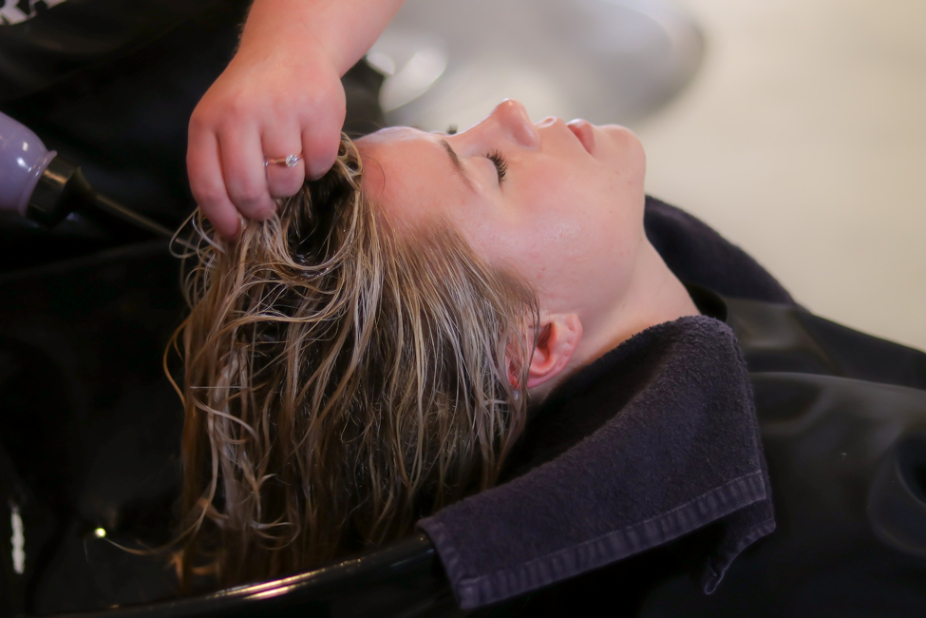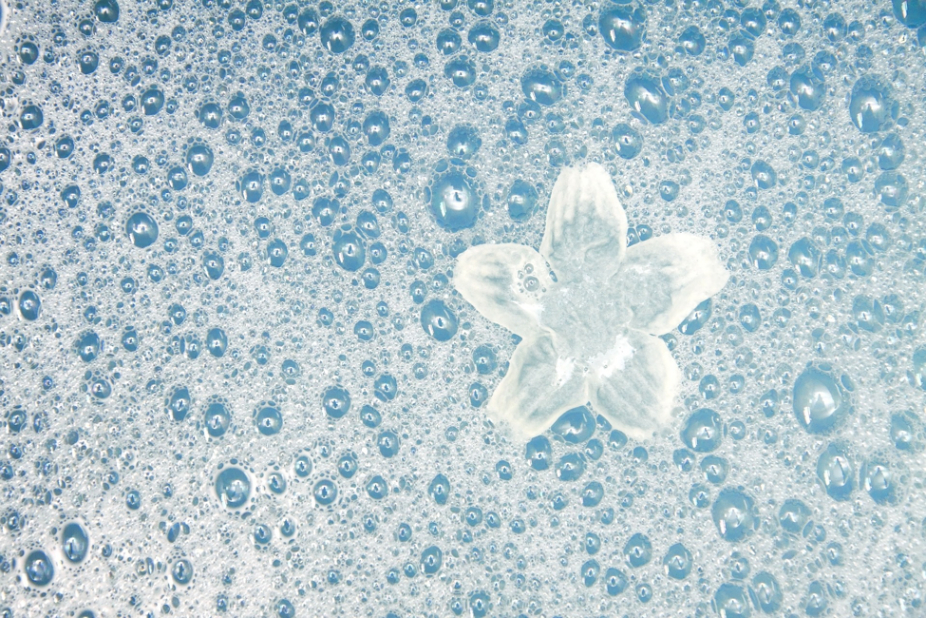Almost everyone has had a bad hair day; unfortunately, it might make you feel less confident. Next to good skincare comes beautiful hair — it changes everything and can contribute to one’s first impression. Your hair will look better when it is in good shape because it becomes easy to take care of it and style as you wish.
Hair strands are easily susceptible to thinning, dullness, frizz, breakage, and dryness, among other forms of damage. This brings us to the question — how can someone maintain healthy hair or stay away from these hair damages altogether?
As you may have guessed, there is no one top-secret shortcut to having healthily maintained hair. But of course it does help to take the time to study your hair and take care of it consistently — it all comes down to your commitment.
Remember that your genetics play a significant role in the type of hair you have. Other factors include diet, pollution, weather, hair care routines, and products. That said, here is your ultimate guide to ensure you maintain healthy, shiny hair.
Your Diet
Not everyone knows that what they eat contributes to the health of their hair, but it’s a fact. Someone said that you are what you eat, and rather than spending more money on hair products that are not working, check your diet first — it could be the problem.
Hair comprises nutrients derived from the food you consume, and if you are eating the right foods, your hair gets nourished as well. So with that being said, what are the right foods or nutrients?
1. Proteins
Proteins contribute to thick and healthy hair — it’s the main nutrient making your hair. Therefore, normalize taking at least 45 grams of protein every day. You can get proteins from poultry, lean meat, dairy products, fish, beans, and eggs, among others. Without enough protein intake, you can easily lose your hair or its color or become brittle.

2. Iron
Iron is the nutrient that keeps your hair strong. You should therefore consider adding red meat and lentils to your diet. To absorb more iron into your body, you might need to pair these foods with Vitamin C, which also assists in preventing hair breakage. You can get Vitamin C from sweet potatoes, oranges, guava, papaya, and kiwi fruit. With these two combined, your hair shaft remains strong.
3. Omega-3 Fatty Acids
Most people pay little or no attention to their scalp, although it is very important to the overall health of the hair. That said, you might need to start or increase Omega-3 fatty acids intake to avoid an inflamed or dry scalp. The hair follicles also remain moisturized while the hair glands remain sebaceous.
Other benefits you can get from omega-3 fatty acids include reduced itchiness and dandruff. Therefore, take more fatty fish such as sardines, salmon, herring, and trout. Other sources include yogurt, salad, flax seeds, walnuts, cottage cheese, cereal, or canola oil.
4. Zinc
Keratin is an integral component of hair, and it is usually formed by zinc in your body. The lesser amount of zinc you have, the more your hair becomes brittle, dull, and dry — it’s a major cause of hair shedding. The primary sources of zinc include red meat, chickpeas, pumpkin seeds, cashew nuts, pecans, and almonds. Filtered water, vegetables, fruits, and zinc supplements can also add to the same effect.
5. Vitamin A
Those who want to increase the shine on their hair can add Vitamin A to their diet. With sufficient Vitamin A, the scalp glands produce sebum, which is an oil that keeps your hair and scalp moisturized. You can either take Vitamin A supplements or increase your carrots, mangoes, sweet potatoes, and pumpkin intake.
Get to Know Your Hair Type
Do you know your hair type? Most people don’t. Unfortunately, without this information, you could be using the wrong products on your hair all along. You also cannot sufficiently take care of your hair or style properly. In this section, get to know different hair characteristics that might help you understand your strands.

The Curl Pattern
The curl pattern is characterized by a number and letter beside it from 2a to 4c. The letters define the density of the hair whereby ‘a’ means thin hair, ‘b’ stands for medium-thick hair, while ‘c’ stands for very thick hair. However, there is one extra hair category, type 1, which is straight with no curls or waves. When you know your hair curl pattern, it is easy to understand how it behaves in different circumstances and learn how to treat it. The numbers describing your hair type stands for the following:
Type 1: This is straight hair with no curls or waves. It usually appears thin, soft, and oily.
Type 2: This hair type is characterized by a wavy pattern with a noticeable ‘S’ shape. It is easy to straighten or form curls. However, it can be frizzy, especially with denser waves. Avoid heavy products with this hair type.
Type 3: This hair type comes with defined curls — some are spirally curly or coily. It has a definite ‘S’ pattern, which is voluminous, thick, and also frizzy. Type 3 hair patterns get easily affected by weather, which calls for the use of the right products to remain healthy and fresh.
Type 4: Type 4 hair is characterized by a kinky and tightly coiled pattern. It is a wiry hair with little to no curl definition. Due to fewer cuticle layers, it exposes the hair strands to dryness and damage. It is advised that you use as little heat as possible when drying or styling.
Pick The Right Shampoo
It can be challenging to buy the right shampoo for your hair, and finding numerous brands on the shelves makes it even more confusing. Remember that different shampoos are made to treat various hair types, which means you should not just pick any shampoo and run with it. Some of the words you will see describing shampoos include: hydrating, strengthening, smoothing, moisturizing, thickening, color-safe, and non-moisturizing.
Another aspect to consider is the ingredients used in the shampoo. For instance, you can avoid shampoos with harsh components such as sodium sulfate or ammonium sulfate. Instead, buy those made from organic products like argan oil, coconut, or aloe vera. Any organic shampoo can be used on any hair type and protect it from breakage and dull appearance.
To match any of these shampoos with your hair, you must understand your hair type first. The good news is that choosing the wrong shampoo does not necessarily mean you will damage your hair. However, your hair may not get the benefit you needed from the shampoo. It is all about getting the right formula to nourish and treat your hair.
Since you already know your hair type based on the description provided above. You might need to understand your scalp as well before buying your hair shampoo.

Which shampoos should you buy based on hair type?
• Fine hair: If you have fine hair, you need volumizing shampoos to help thicken the hair strands.
• Thick hair: You need moisturizing and hydrating shampoos to boost your hair’s shine, smoothness, and moisture.
• Straight hair: This one needs more smoothing shampoos. Depending on whether it's frizzy or dry, you can also use moisturizing shampoos.
• Wavy hair: This is for people in both type 2 and some in 3 hair groups — balancing shampoo would be a perfect choice.
• Curly and kinky hair: Most of these hair types tend to be dry and frizzy. Apart from moisturizing shampoos, any other product that can help reduce frizz could be a good option.
• Brittle hair: Any type of hair can become damaged for different reasons. If this is you, go for fortifying and strengthening shampoos — they tend to have more proteins in them. An organic shampoo could also help as many contain natural ingredients to enhance growth and maintain its shine.
Which Shampoo Is Perfect for Your Scalp?
• Oily scalp: This type of scalp can be difficult to handle due to excess sebum production despite washing your hair several times a week. In this case, avoid any shampoo labeled as smoothing, hydrating, or moisturizing. They might add more moisture to the hair. Instead, go for those tagged as strengthening, balancing, or volume-rich shampoos — they can help remove the extra oil on your scalp and hair. A clarifying shampoo can also be perfect for you as long you do not overuse the product.
• Dry scalps: Dry, flaky, or itchy scalp can be very uncomfortable and sometimes embarrassing. In this case, you need to go for those shampoos left by the oily scalp carriers. This means hydrating, moisturizing, or smoothing shampoos. Also, avoid all those shampoos that contain sulfates — they will make your hair super dry. Instead, look for ingredients like tea tree or menthol for ultimate moisturizing. An Organic shampoo could also be a perfect choice for dry scalps.
Washing Your Hair
The first rule about hair washing for healthy strands is doing it minimal times a week. You do not need to wash your hair daily — 3 to 4 times a week are enough. Use lukewarm water when cleaning and just enough products rather than weighing it down with too much.
When washing the hair, be gentle with your hands and towel to avoid breakage, especially when wet. For safe detangling, avoid vigorously brushing or combing the hair. In this case, you can make use of a wide-tooth comb for a better outcome. Finally, complete your hair washing with a cold-water rinse. It will help seal the hair cuticles and prevent damage.
Hair Conditioning Is a Must
Hair conditioning is essential for every type of hair. It assists in minimizing friction and frizz, enables easy detangling, and leaves the hair shiny, soft, and manageable. When buying a hair conditioner, go for those that contain anti-static lubricating ingredients such as silicone. It will help in deactivating the adverse electrical charges produced by hair fiber.
For the best outcome, use a comb to apply the conditioner sufficiently on all hair strands up to the length. And to prevent breakage, start from the mid-shaft to the tip and finally from the scalp. Leave the product for 2 or 3 minutes before rinsing. Maintain this conditioning routine during every wash. It will leave your hair healthy and prevent your scalp from drying.
Mask-Up Your Hair
Hair masks are very good at keeping your hair smooth and moisturized. There are numerous brands out there, and it is for you to read the ingredients and match the outcome you need. Also, you don’t always need to buy a hair mask because you can make them with household ingredients at home. For instance, you can make a banana, avocado, or aloe Vera mask to nourish your hair. They are easy to make, and you can watch YouTube videos to understand the ingredients added and how to apply them.

Brush Your Hair Correctly
Some people brush their hair from the bottom to the tip, which is their first mistake. You are pulling your hair from the follicles, hence, breakage. Start from the mid-shaft or few inches from the scalp first, and once it's smooth, you can work from the bottom. Also, brush your hair in small sections when detangling to prevent breakage and damage. And when at it, be very gentle.
Another vital secret to correctly combing your hair is doing it when it's dry, before washing. Finally, it may go without saying, but use clean combs always — combs can easily get dirty due to hair oils.
Get A Trim Regularly
Most people, especially those looking for a better length, may disagree with cutting off their hair, but they are misinformed. Without regular trims, the hair strands will break off easily at the ends, and it may not grow anymore. Have you ever looked keenly at your hair strands and found split ends? That is a symptom of damaged hair, and those ends must be snipped off to continue thriving. Cutting the ends after every two or three months will increase your hair length and volume eventually.
Everyone wants healthy, shiny hair, but very few people put the work into achieving this look. Suppose you are ready to commit to a reliable and efficient hair routine. In that case, this crucial guide will help you get started and ultimately attain that glow on your hair. Patience is key and good luck on your hair journey.